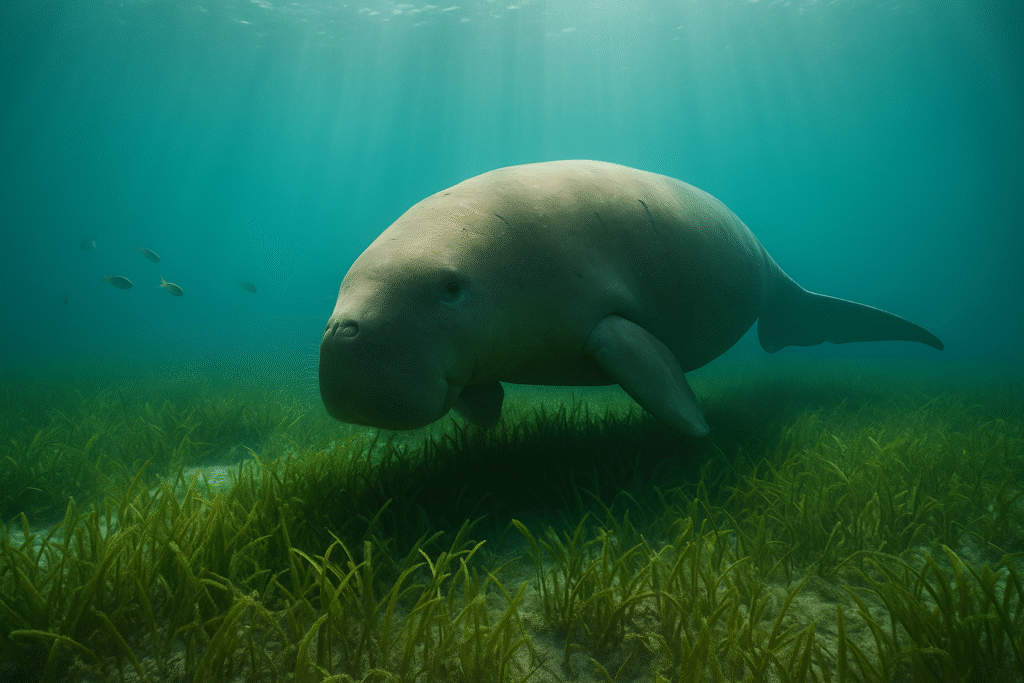They call her the sea cow, but the name falls short of her quiet grace. The dugong drifts through shallow, seagrass meadows of the Indian and Pacific Oceans, grazing with a patience that seems to belong to another age. Rounded, slow, and gentle, she carries in her curved form a memory of myths and a warning of fragility.

The Shape of Stillness
Unlike her distant cousins, the dolphins and whales, the dugong is no acrobat of the sea. She does not breach or sing. Instead, she glides low to the seabed, a shadow tracing the soft sway of grasses, using her bristled, downturned snout to pluck each blade. She is the gardener of the shallows, keeping seagrass meadows alive — meadows that, in turn, feed fish, stabilize coasts, and shelter entire ecosystems.
Her body, though heavy, moves as if unhurried by time. Flippers tucked close, a crescent tail propels her forward with minimal sound. Watching a dugong is like seeing the tide itself become flesh.
Myths of Mermaids
For sailors of centuries past, a glimpse of dugongs and their kin — the manatees — may have sparked the stories of mermaids. Seen at dusk, their human-like faces rising from the water, mothers cradling calves at their side, they became the ocean’s illusions: messengers of longing and imagination.
In many coastal cultures, dugongs are revered. In parts of Indonesia and the Pacific, they were once considered sacred, tied to fertility and protection. Today, they remain symbols of mystery — real creatures draped in the veil of myth.
On the Edge of Silence
But silence can be dangerous. Dugongs do not resist. They do not flee far. Boat strikes, entanglement in fishing nets, loss of seagrass meadows from pollution and coastal development — all weigh heavily. Their populations, once wide across tropical seas, now shrink to pockets. In places like the Philippines and East Africa, they hover at the edge of disappearance.

The dugong’s fate is tethered to the meadows she tends. Where seagrass dies, she follows. To lose her is not just to lose a species, but to unravel the quiet balance of shallow seas.
A Vigil in the Shallows
There is a dignity in her endurance. To see a dugong today is to witness not only a rare animal but a survivor, an elder of the oceans who has endured since the time of the pharaohs. As we watch her graze, the question lingers: will her kind be allowed to keep watch over the seagrass for centuries more, or will she become only a mermaid’s echo, a tale of what once was?

The dugong asks nothing of us but space and silence. In return, she offers a vision of harmony — the sea breathing slowly, a meadow swaying in rhythm, a creature grazing in eternal calm.


Reply